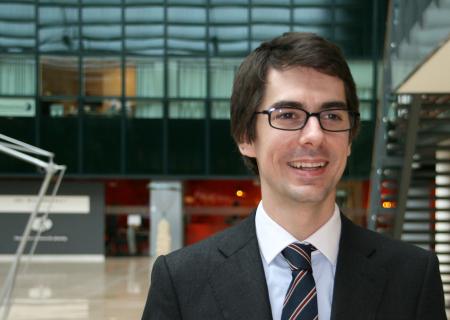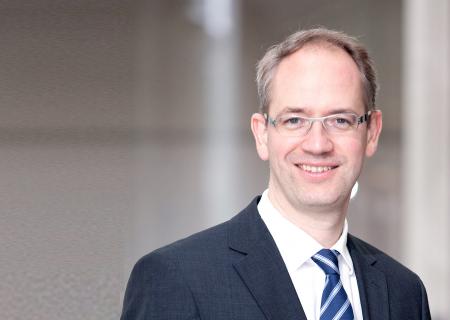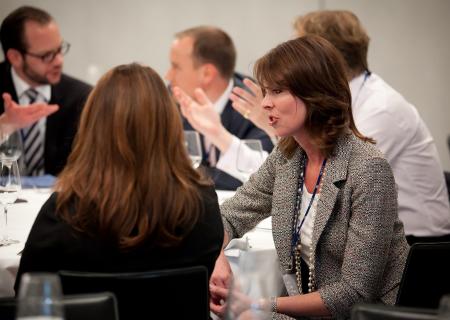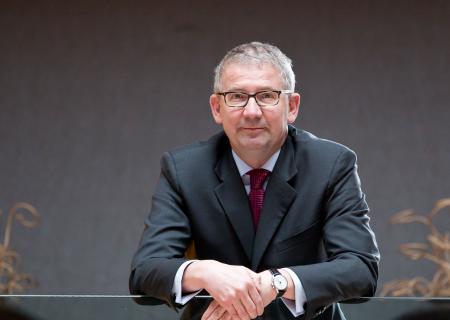Jewel in the sun: Annual Conference Barcelona 2013
INREV celebrates its tenth anniversary
INREV celebrates its tenth anniversary at its conference in Barcelona.
Legendary pop singer, Freddie Mercury, described Barcelona as the “jewel in the sun” in his homage to the city. It was certainly a great setting for the 2013 Annual Conference - the eighth to date.
The Conference featured a host of leading industry commentators all of whom offered thought-provoking contributions.
But if the chatter among delegates was anything to go by, there were four particular gems. Joseph Azelby’s high-octane defence of “real assets”; the combined force of Willem de Geus and Pieter Hendrikse; and a punchy panel discussion chaired by Jeff Jacobson captured the imagination of delegates on the first day. And on day two, Jerry Speyer enthralled the crowd with a frank overview of his long and distinguished career in real estate.
The conference drew 400-plus delegates from across Europe and beyond, emphasising the growing importance with which European and international investors and fund mangers view non-listed real estate – an encouraging sign in this, INREV’s 10th anniversary year.
Nightingale confirmed that business cycles are alive and well
Attendees at the pre-conference Annual General Meeting (AGM) endorsed the revised Articles of Association that, among other things, will see INREV include joint ventures, club deals, separate accounts and other alternative forms of non-listed investment within its remit. INREV will also extend its reach beyond Europe and, working with other partner organisations, spread the non-listed real estate message to international markets – notably the US.
The AGM approved three new Management Board members. Eric Adler, Global Chief Investment Officer, Pramerica Real Estate Investors; Wenzel Hoberg, Managing Director and Head of Real Estate Investments – Europe, Canada Pension Plan Investment Board (CPPIB); and Allan Mikkelsen, Partner, ATP Real Estate. All will play a key role in bringing forward INREV’s expanded scope and evolving strategy. Patrick Kanters, Managing Director, Global Real Estate, APG Real Estate and Noel Manns, Principal, Europa Capital were also re-elected.
Keynote Address
The conference got underway the following morning with Matthias Thomas, CEO of INREV, explaining the main theme: The rationale behind real estate allocations. He talked about scale of change over the past 10 years, and referenced INREV’s contribution to this on-going process.
Time is the key to solving difficult economic conditions
In the keynote address, leading economist, Roger Nightingale, confirmed that business cycles are alive and well. He explained that, in his view, monetary policy works to some degree but fiscal policy rarely does; that excess supply and excess demand are the only significant drivers of economic activity, and that politicians and economists exert little or no control. Time, he said, is the key to solving difficult economic conditions. But poor economic cycles can also be good for investment and he described the current environment as an “easy wicket for real estate.” He suggested that tenants’ profits were the big clue urging investors to “look at where profits are the highest and buy your assets there.”
Then came JP Morgan’s Head of Global Real Assets Joseph Azelby (see box). He admitted he had a considerable amount at stake but was comfortable backing his bet on “real assets” and predicted that, with the levels of pent up demand from institutional investors, there was a desire to move toward 25% allocations to real assets.
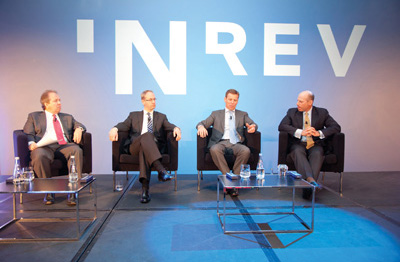
Allocations
In a wide-ranging debate, Jeff Jacobson, Global CEO of LaSalle Investment Management, quizzed panellists about their allocation strategies. For Europe, Hoberg said he favoured a deal-by-deal approach. “If it makes sense we’ll do it,” he said and then added. “We can only survive in Europe if we include Turkey and Asia in our portfolio!”
Addressing a question about balancing assets, Kanters explained that he preferred to keep a flexible approach so he could take advantage of opportunities and balance allocations between real estate and infrastructure. Eric Lang Managing Director, Real Assets, Private Markets, Teacher Retirement System of Texas, shared his thoughts on currency risk, confirming his view that the euro was a problem. “We don’t have much confidence in it and we need to hedge it if we can,” he said.
Casper Hesp, INREV Director of Research and Market Information, explained how the development of a Global Fund Index would provide the industry with the most comprehensive performance measurement tools to date. Critically, this initiative will enable investors and fund managers to better compare non-listed real estate investments with other asset classes.
Lagares concluded that now is the right time to invest in Spain
The afternoon of the first day began with some invaluable insights from Paul Mouchakka, Executive Director, Morgan Stanley Investing, on the importance of careful timing and planning. He talked about the benefits of tying real estate investment strategies to overall investment strategies and the need to select the right fund manager, bearing in mind the need for alignment of interest. He urged delegates not to ignore the critical function of performance monitoring. He highlighted the work that INREV and NCREIF did in this respect and encouraged delegates to work with these organisations to further enhance transparency within the industry. He concluded: “It’s all about a cycle and planning over time.”

The last presentation of the afternoon whizzed delegates through a witty, whistle-stop history of the industry. Founding members of INREV, Willem de Geus, Partner, Proprium Capital Partners, and Pieter Hendrikse, CEO EMEA of CBRE Global Investors, followed in the worthy tradition of the comedy double act to share their highlights of the past decade in a highly entertaining tribute to INREV’s 10-year anniversary. They covered considerable ground touching on the architecture of Stonehenge through to “US astronauts landing in the European real estate space”. Ending with a musical tribute, de Geus and Hendrikse had the audience tapping their feet and clapping their hands in time and in appreciation.
DISTINGUISHED CAREER
If any were needed, Jerry Speyer, founder of Tishman Speyer, provided the perfect kick-start to the second day. In conversation with Financial Times journalist, John Plender, Speyer talked about changes, developments, challenges and opportunities he had experienced during his extensive and distinguished career. He spoke about the current high levels of capital available for investment in real estate and the great opportunities in what he described as “21st century” markets such as Middle East and North Africa, Brazil and Asia. He admitted that leaving China in 1990 was among one of his top three biggest mistakes. But the message he returned to time and again was the critical importance of people. He talked enthusiastically about Tishman Speyer’s model of service on a global basis combined with talented people at a local level. People, said Speyer, “are always key”. So much so that he even described his finest moments as being those when he was “promoting people to take on new challenges and seeing them grow”.
Dan D’Aniello, Chairman and co-founder, of the Carlyle Group followed on. From his experiences in the private equity market, D’Aniello drew parallels with real estate. And gazing into his crystal ball, he offered his vision of the future shape of the fund management industry. He talked about increasing transparency, an improvement in the image of both sectors, greater alignment between LPs and GPs and, perhaps most encouraging of all, a recovery in deal volume.
Next on stage was a cohort of industry veterans – Barry Blattman, Managing Partner of Brookfield Asset Management, Urban Edenström, Chairman of Niam, Alex Jeffrey, CEO of M&G Real Estate, and Udo Schaffer, Head of Real Estate Portfolio Management at E.ON. This panel, chaired by Iain Reid, Principal, REID Advisors, provided thought-provoking commentary on the ever-changing relationship between fund managers and investors.
The penultimate presentation offered the audience a picture of Spanish banks on the mend. Manuel Lagares, General Manager of Banco Financiero y de Ahorros (better known as Bankia) explained how the medicine was working and that the underlying financial structure of Spain was responding well to the rehabilitation and restructuring process. He said confidence was increasing and that there were “good signals for the positive impact [of the restructuring] for real estate”. Citing greater levels of transparency, a better labour market and an economy that remains “innovative”, Lagares concluded that now “is the right time to invest in Spain”.
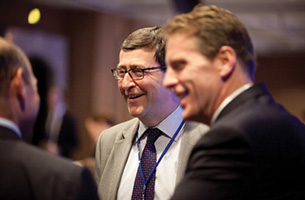
And finally, Professor Susan Greenfield, an expert on the physiology of the brain, challenged delegates to think deeply about the way they interact with their environment – especially the growing technological and media influences that affect all areas of life – and to aim for, what she described as, “mind change”. Managing our environment properly, she argued, provides the conditions to develop our potential and that of those around us.
It was an appropriate conclusion to a thoughtful conference focused on innovation and evolution.
Winning Formulae: Finding Real Estate's Role in Asset Allocations
In a tour de force, Joseph Azelby, Head of Global Real Assets, JP Morgan, argued strongly in favour of investment in real assets (including, real estate, infrastructure, timberland, transport, energy). In his view this mix of different but complementary assets offers several important advantages, including:
- lower volatility than bonds
- higher returns than equities
- diversification
- exposure to emerging markets
- inflation-hedging characteristics
The audience listened intently to his insights, which prompted a number of questions from the floor and will no doubt have sparked debate among delegates that will probably run and run. The former linebacker for the Buffalo Bills football team packed his presentation with striking one-liners such as:
- “The free lunch on global bonds has gone”
- “Markets should copy Hollywood and go for short Bonds”
- “Institutions will be looking at their investment teams and expecting them to take some risks and do something”
- “I’m hoping that more people will move into infrastructure”
- “More risk is coming back. It’s a good time to invest in poor assets and improve them”
- “Interest rates could increase by 100 basis points and still not impact real estate cap rates and prices”
- “Real assets will be the biggest allocations in the future, of which real estate will be the biggest component”
Despite his entertaining and impassioned presentation, Azelby was unable to shift opinion on the merits of changing the INREV name to INRAV, with the “a” standing for assets. In a snap poll of conference delegates there was resounding support for keeping the organisation’s original moniker, with 62% of the audience rejecting the (albeit tongue-in-cheek) proposal for change.


